If there is a nuclear bomb detonation near you, what would you do? Nukes aren’t necessarily a death sentence if you are properly prepared. While the fireball is instantly deadly, the fallout can be avoided or even sheltered against. Knowing the closest fallout shelters or bunker locations is an important part of nuclear survival planning.
Those that have their own bunkers have it easiest, but you don’t want to be left scrambling around trying to figure it out at the moment. A quick look and integrating what you find into your plan can make the difference between life and death. While we all hope you’ll never need it, we’ll help you find the fallout shelters near you below.
Contents (Jump to a Section)
What are Fallout Shelters?
Fallout shelters are structures specifically designed and built to provide protection from radioactive fallout in the event of a nuclear war or nuclear accident.
Fallout itself is the residual radioactive material that is dispersed into the atmosphere after a nuclear explosion or nuclear reactor accident. It looks a bit like light snow when it is visible and is easily carried by the wind. Ground-burst nuclear attacks are designed to kick up as much fallout as possible since there has been plenty of testing over the years on the most effective detonation height to generate the largest fallout ‘plume’.
Fallout shelters can take many forms, from simple underground bunkers to more complex structures built into the basements of buildings or even entire underground complexes. They are usually designed to shield occupants from gamma radiation, which is the most dangerous type of radiation emitted by fallout.
During the Cold War era, fallout shelters were built across the United States and in many other countries as a way to protect civilians from the potential effects of a nuclear war. Since the Cold War, Civil Defense funding has been cut significantly and public fallout shelter plans lapsed and are much less common now.
Directional fallout shelter signs used to be commonplace on street corners, pointing the public to protected areas for when the unthinkable happens.
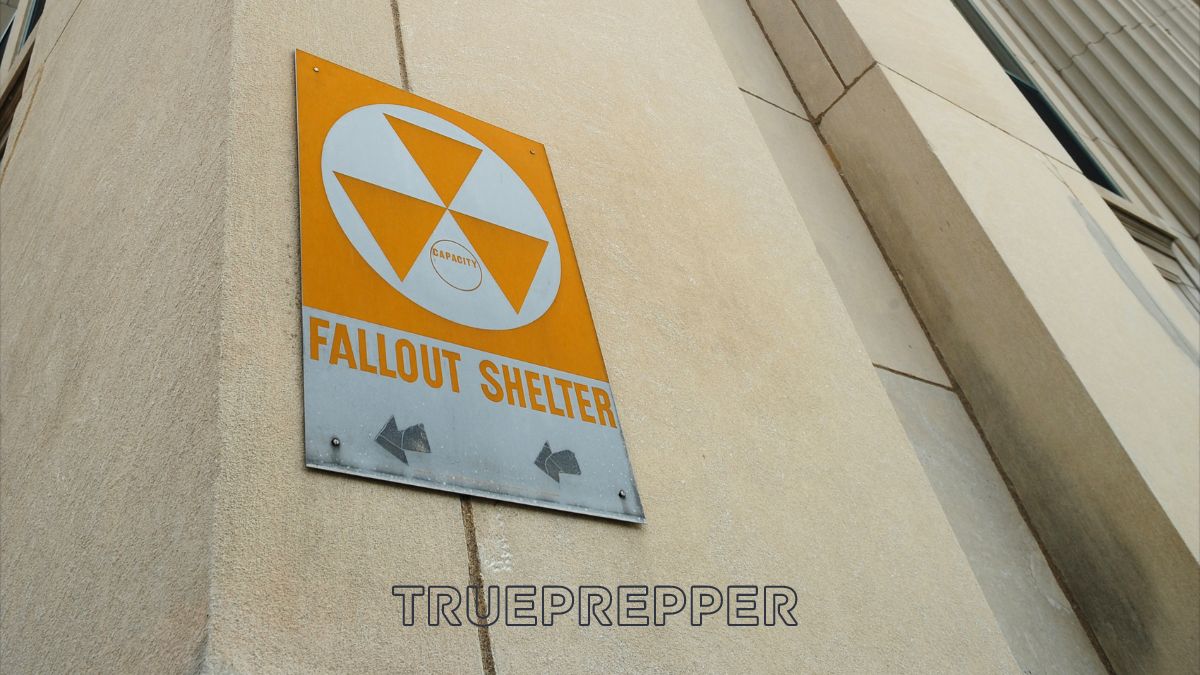
Public Fallout Shelter Location Maps
There were many fallout shelters created, designated, or labeled in the US by Civil Defense and other entities. Local counties and cities were cooperative in city planning sessions to ensure that residents had designated spaces that were prepared for nuclear events.
New York City Fallout Shelter Map
New York City is a prime target for terrorism and unconventional attacks as it is the largest city in the US. No wonder there are still at least 250 labeled fallout shelters in the city alone. You can find one near you using the interactive map:
Washington DC Fallout Shelter Map
Another robust target, the nation’s capital has had a comprehensive fallout plan in place for close to a century. You can still find a PDF copy of the original civil defense plans. Many of those shelters are no longer labeled or are now unverified as you can see on the interactive map:
Detroit, Wayne County, & Michigan Fallout Shelter Maps
Detroit had over 2,000 fallout shelters identified in the 80s, but the list continues to shrink. Here is the interactive map of their current locations:
Wayne County has even more in the suburbs of Detroit:
And the remainder of Michigan is pretty sparse in comparison to the above two bomb shelter maps:
Texas Fallout Shelter Maps
Many counties in Texas have had community fallout shelter plans, including:
- Dallas County
- Denton County
- Scurry County
- Parker County
- Tarrant County
- Collin County
- Shelby County
- Cook County
- McClennan County
- Fannin County
- Gillespie County
The Civil Defense Museum keeps PDF copies of these plans on hand, so be sure to check those out if you are in any of those counties.
Georgia Fallout Shelter Map
Georgia (with the exception of Atlanta) is a lot more spread out than our other fallout shelter maps. Here is the interactive map of fallout shelters in Georgia:
Alabama Fallout Shelter Map
Alabama has plenty of bomb shelters left too. Check out the interactive map to find one near you:
Eugene, Oregon Fallout Shelter Map
Fallout shelters aren’t just for the East Coast. Eugene had a robust plan in 1968, although these locations have not been verified since.
Milwaukee, Wisconsin Fallout Shelter Map
Milwaukee’s fallout shelter program has been preserved to a degree thanks to the Raynor Memorial Libraries. They have integrated their data into Tableau to create an interactive map that you can drill down into:
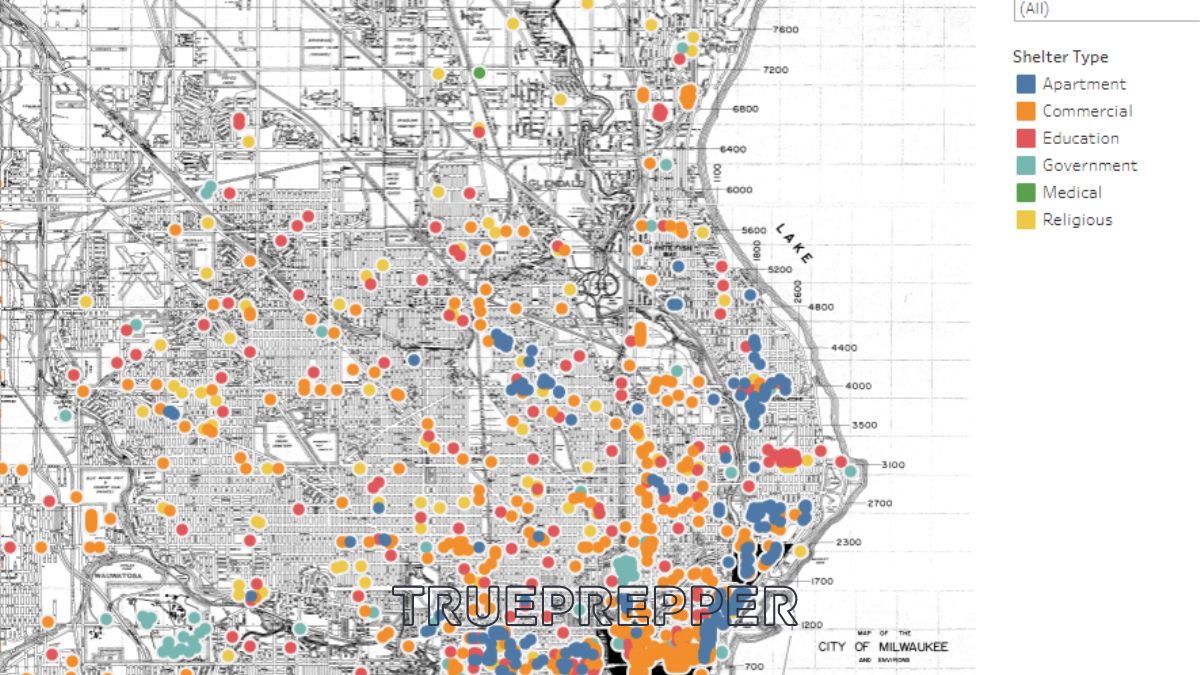
Other Counties in the US
With the main maps covered above, there are a few counties that prioritized their nuclear preparedness over the rest of their state:
- Baltimore, MD
- Shelby County, TN
- Lane County, OR
- Cambria County, PA
- Jefferson County, WA
- Cowley County, KS
- Monroe County, IN
- Hampton County, SC
- Spartanburg County, SC
These are by no means the only counties in the US with fallout shelter plans. These are just the ones documented by the Civil Defense Museum. You can find fallout shelter signs in most US cities if they have not been intentionally removed or covered. Many of the facilities labeled would still offer significant protection in the event of nuclear fallout.
What Makes a Good Fallout Shelter?
Good fallout shelters are designed to provide maximum protection against radiation exposure. Here are some key factors that help a fallout shelter do its job:
- Shielding: The shelter should have thick walls and a roof made of materials that are effective at blocking radiation, such as concrete or steel. The thicker the shielding, the better the protection. Alternatively, several yards of dirt will work so many shelters are below ground.
- Ventilation: The shelter should have a ventilation system that filters out radioactive particles while it brings in air. The system should be designed to minimize the amount of outside air that enters the shelter.
- Water and food supply: The shelter should have a reliable source of clean water and a stockpile of non-perishable food that can last for several weeks or months.
- Waste disposal: The shelter should have a system for disposing of human waste and other trash so it does not contaminate the shelter’s air or water supply.
- Space and comfort: The shelter should have enough space to accommodate the number of people planning to go in it, and is ideally equipped with basic furniture and amenities, such as beds, chairs, and a toilet.
- Location: The shelter should be located in an area that is unlikely to be directly impacted by a nuclear explosion, and should be within quick access to the people planning to use it.
Overall, a good fallout shelter should be well-designed, well-stocked, and well-maintained to provide the best possible protection for those who may need to use it.
How Fast Do You Need to Get into a Fallout Shelter?
The speed at which you need to get into a fallout shelter depends on several factors, including the distance from the explosion, the size of the explosion, and the direction of the wind. In general, the closer you are to the explosion, the more quickly you should seek shelter.
If you are within a few miles of a nuclear explosion, you may only have a few minutes to seek shelter before the fallout arrives. However, if you are farther away, you may have several hours or more to find shelter before the fallout reaches your area.
It is important to note that fallout radiation can continue for days, weeks, or even months after a nuclear explosion. Therefore, it is important to stay in your shelter until you are told it is safe to come out.
If you hear a warning of a nuclear attack or nuclear accident, you should immediately seek shelter in the nearest available fallout shelter. If there is no shelter nearby, you should try to find the most secure location possible, such as a basement or the interior room of a building, and cover yourself with anything that can provide additional shielding, such as thick blankets or mattresses.
Shelter vs. Evacuation
The answer is both.
You should be prepared to ‘bug-in’ or in a nearby shelter if needed. Or, ‘bug-out’, meaning you evacuate the area if you have the information on hand that lets you know that is the safest option.
For the same reason you don’t necessarily have to immediately go into a fallout shelter (based on wind, distance, and warning time)- you could also evacuate the area to avoid the fallout altogether. This can be risky if you are unsure whether there is congestion on the evacuation route.
Planning for panic is always smart, so be sure that your plans aren’t too reliant on things like clear highways.
If you don’t have a bunker-style fallout shelter you can still shelter-in-place for fallout before you evacuate. Shelter-in-place only requires plastic sheeting and duct tape to restrict airflow, and a little bit of planning and know-how. Many weaponized isotopes decay quickly, making a 24-hour wait-it-out strategy work well before you get out of dodge.
Shelter-in-place use is directed by regional Emergency Operation Centers (EOC) around the same time as the orders for public use of Potassium Iodide tablets. If you don’t have the cheap kit or tablets ready to go, you’ll just need to do your best without them.
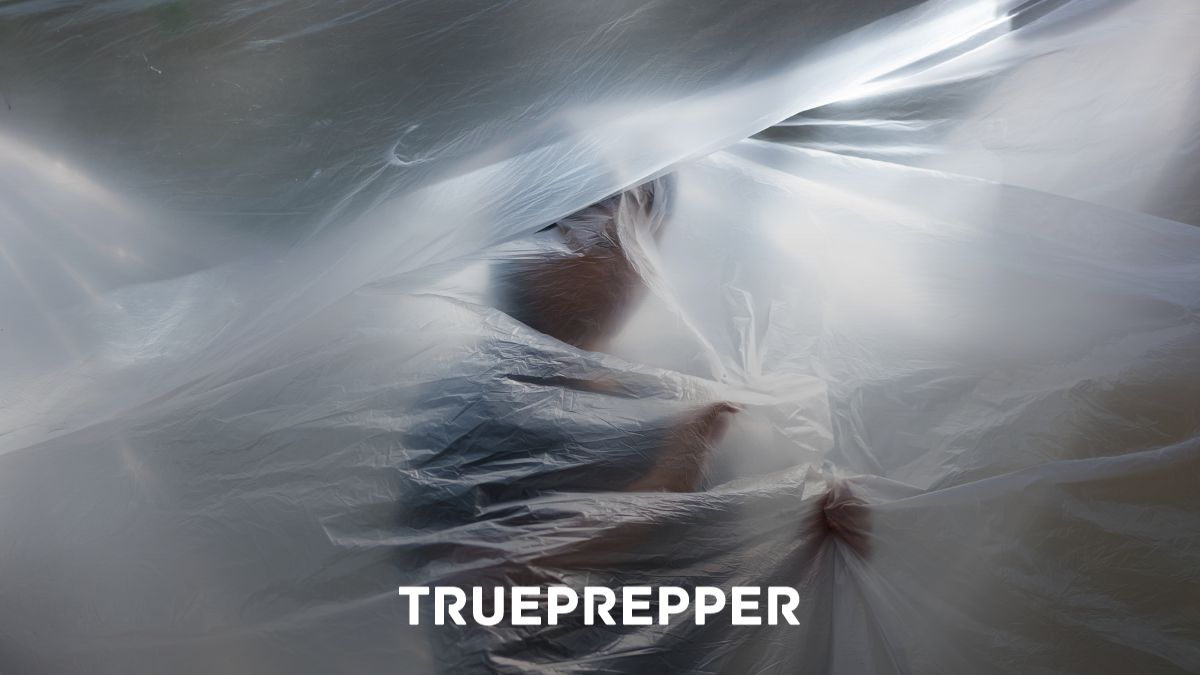
How Long to Stay Inside a Fallout Shelter?
The length of time that you should stay in a fallout shelter depends on the level of radiation exposure in your area. Fallout radiation can last for days, weeks, or even months after a nuclear explosion or nuclear accident, so it is important to stay in your shelter until you are told it is safe to come out.
The amount of time you should stay in a fallout shelter can vary depending on a number of factors, including:
- Distance from the explosion: The closer you are to the explosion, the longer you will need to stay in your shelter.
- Shelter quality: A well-built shelter with proper ventilation, a high level of radiation shielding, and a large cache of supplies will provide more protection and allow you to stay in the shelter for a longer period of time.
- Radiation levels: Radiation levels will decrease over time, so the longer you stay in your shelter, the lower radiation exposure will be in fallout-affected areas. Different radioactive isotopes decay in different amounts of time, so the nuclear payload can affect this. Fallout is most deadly when it arrives as the decay has hardly started.
In general, it is recommended to stay in your fallout shelter for at least 24 hours after the initial explosion or until radiation levels have dropped to a safe level. If radiation levels are still high, you may need to stay in your shelter for several days or even weeks. It is important to listen to instructions from authorities and follow their guidance on when it is safe to leave your shelter.
Are There Public Fallout Shelters in the USA?
Sort of- the big caveat to the maps we show above is that those fallout shelters are not supported anymore.
Public fallout shelters were built in the United States during the Cold War era, but most of them have since been decommissioned or repurposed. Today, there are very few public fallout shelters that are maintained specifically for the purpose of protecting people from nuclear fallout. Still, many of those fallout shelter areas still have effective shielding (but probably not supplies).
Post Office Fallout Shelters
The US Postal Service played a large part during the Cold War-era Civil Defense, and many post offices built during this period were designated fallout shelters and were stocked accordingly. They were so common that many of them were not designated on county and community maps, yet they still had the well-known Civil Defense badges and fallout shelter placards.
Learn more about the USPS’s role on their website: The Postal Service’s Role in Civil Defense during the Cold War
Modern Fallout Shelters
With Civil Defense no longer a priority, the government has prioritized nuclear deterrence in its stead. Nuclear non-proliferation campaigns have been successful so far in volatile countries. “So far” is the key wording.
There are still some private organizations and individuals who maintain their own fallout shelters for personal use. In addition, some government buildings and other facilities may have designated areas that can be used as fallout shelters in the event of a nuclear emergency. When the United Kingdom scrapped their public WMO (Warning and Monitoring Organisation) nuclear bomb bunker program, the thousands of bunkers were privately sold em-masse.
It is important to note that the best strategy for protecting yourself from nuclear fallout in the United States is evacuation. In the time-distance-shielding equation, distance is the most effective for most. Being evacuation-ready with a basic emergency plan and having a bug out bag ready can help significantly after you’ve waited through the shelter-in-place declaration.
It is recommended that individuals and families make their own plans for both sheltering in place in the event of a nuclear emergency and evacuation. Depending on the nuclear attack target and fallout plume, being ready for either gives you the highest survivability rate.
Pros & Cons of Public Fallout Shelters
Just like any situation, there are both positive and negative aspects when you plan on using a public fallout shelter. One of the biggest variables is the people you may have to share it with. Desperation surrounding a nuclear event can make people dangerous and there may not be authority figures around.
Pros
- No investment needed
- Many people are unfamiliar with them
- Typically high levels of radiation shielding
- Nearby to much of the US population
Cons
- May be completely gone (check before you plan)
- Can get overcrowded
- No management authority or oversight
- No supplies
- Ventilation may not work
- No egress plans
Because nuclear attacks are unlikely, you may be fine with having a public fallout shelter being your nuclear solution. If you are completely unprepared, there are higher priority things to prepare for, like financial stability, home security, and fire protection before you start looking into personal bunkers.
Canadian, UK, and European Fallout Shelters
The United States isn’t the only one with a Civil Defense program and public fallout shelters.
Canada Fallout Shelter Map
Canada had a robust fallout reporting and shelter structure to protect their citizens, even in less populated areas. Here is the interactive map for all of Canada, separated by province:
United Kingdom and Europe Fallout Shelter Map
A handy website, Subterranea Brittanica, has an up-to-date list of fallout shelters across Europe (and the UK, of course).
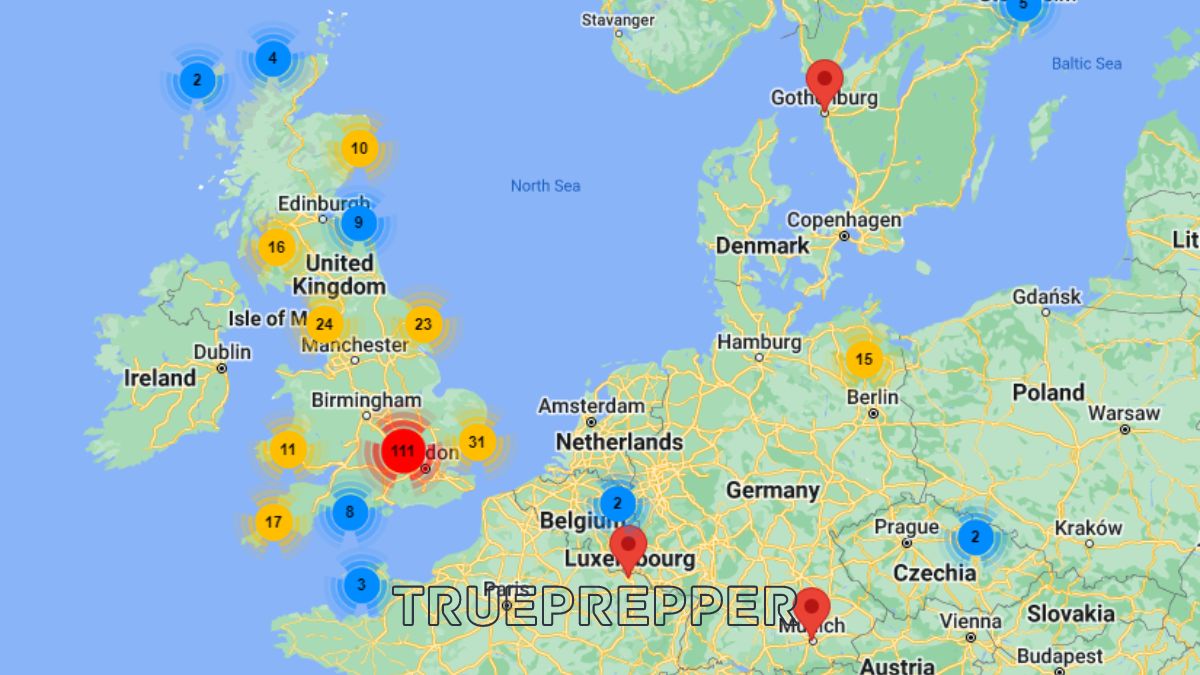
There are also over 1,500 now privately owned WMO bunkers across the UK, with most of them concentrated in the south. They sell for around £20,000 despite being small, cramped, and old. The Daily Star put together a map showing all of these bomb bunker locations.
Fallout Shelter Alternatives
If you can’t find a nearby public fallout shelter and don’t have any friends with one, there are a few fallout shelter alternatives. They aren’t great, but they could save your life. Note that these are just for fallout protection- a nuclear fireball will make short work of all but the most fortified military facilities.
Basements
Just heading down to an underground basement can improve your radiation protection 5 fold. Generally, you want to put as much dirt and construction material between you and outside as possible.
Even a brick veneer on the outside of your home can help, but larger buildings typically use thicker concrete walls.
Large Buildings
Interior rooms or basements of large buildings, like office buildings and hotels have several layers of concrete to shield them from radioactive fallout making them ideal. This is also where many public fallout shelters were designated, because of their great shielding properties.
Abandoned Mines
Starting off with the worst possible choice, abandoned mines are incredibly dangerous. Arizona mine inspectors see a massive amount of mines and recently stated that 13% of inactive mines ‘pose an extreme risk to public safety’. The one thing they do have is plenty of shielding from any sort of radiation once you are inside.
In my opinion, it’s not worth it because there are better options. But, if you want to research abandoned mines near you, here are some handy maps:
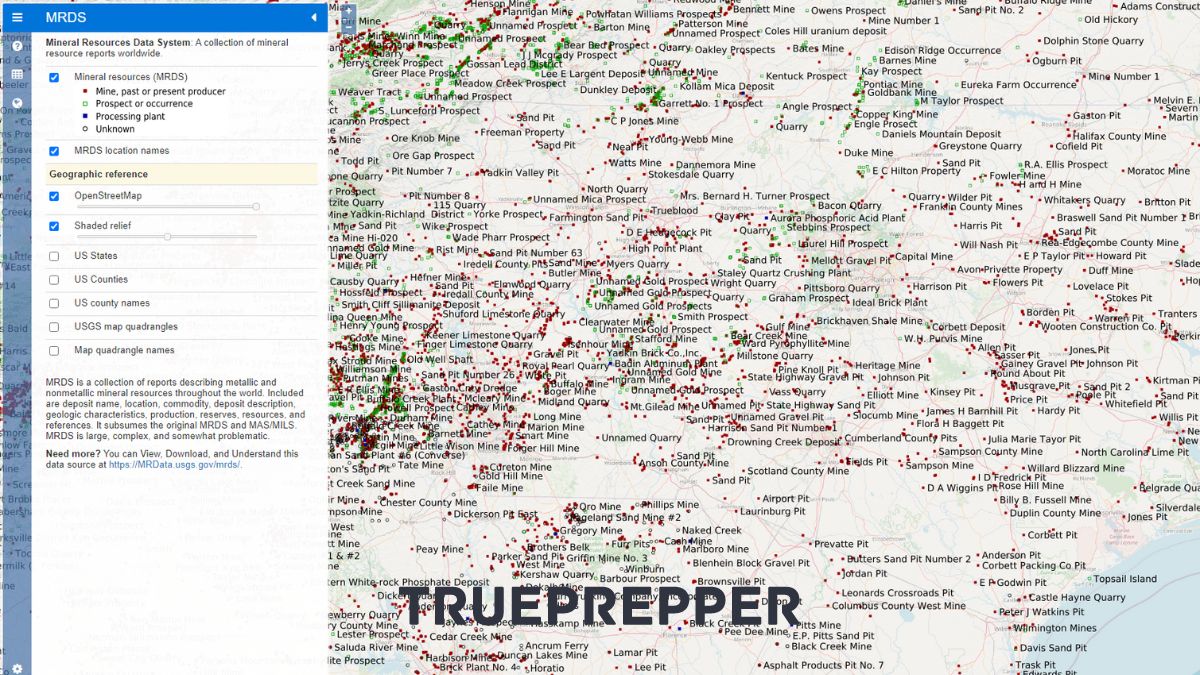
Near me in North Carolina, there are several inactive mineral mines indicated in red.
Not every mine on the MRDS map is above ground though, so don’t make any plans based on a pip on a map.
The MRDS map can be overwhelming though, so a map that is slimmed down to inactive metal mines can also help:
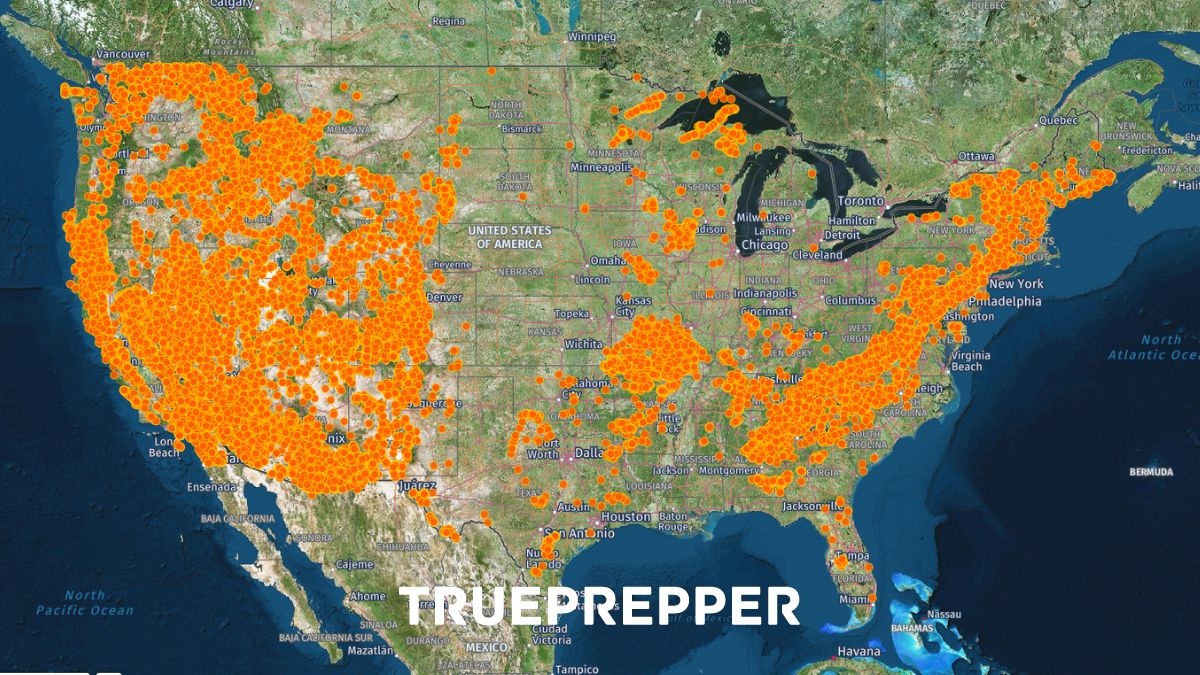
Those in the Midwest will need to keep scrolling down.
As you can see, there are still a lot of options but they are concentrated in specific regions of the US. Use the interactive map to drill down into your area to see all of the options near you.
All of that said, there are much safer options if you’re looking to go underground…
Caves
There are more mines than caves in the US by a staggering margin, but there are plenty of caves out there that could work in a pinch.
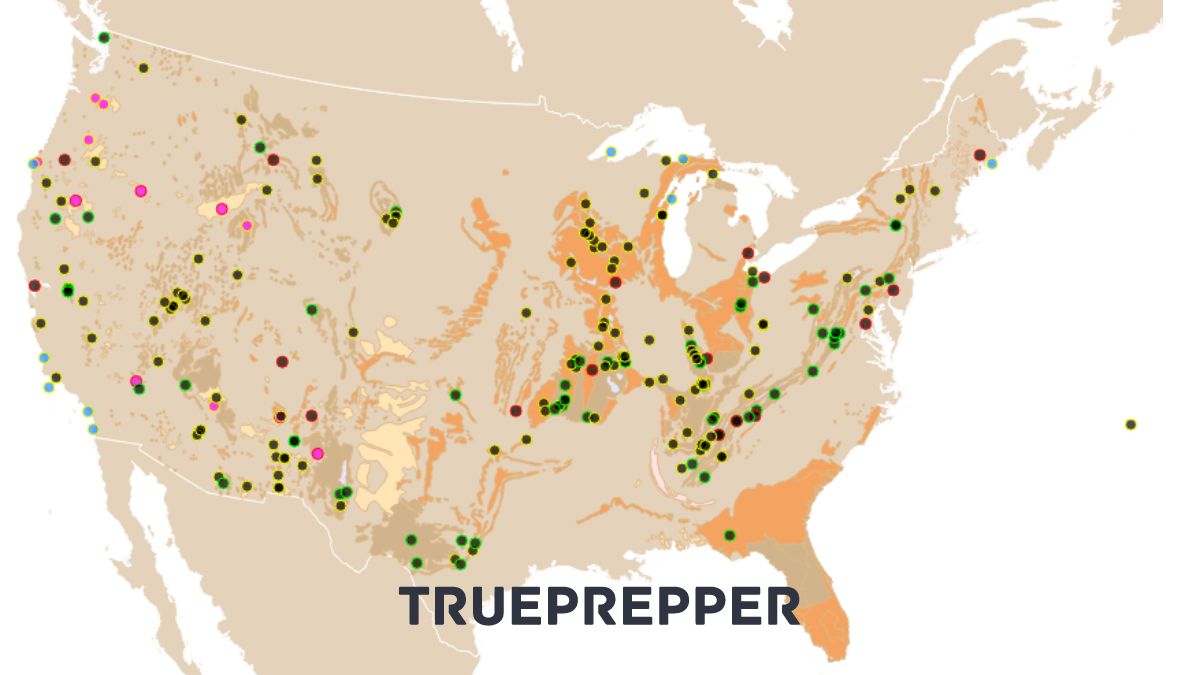
That dot in the ocean isn’t an error, it’s the Crystal Caves of Bermuda
Besides just palling around with spelunkers, caves offer plenty of protection from nuclear fallout. The caves in parks are designed to have people in them regularly and would be much more hospitable in an emergency than an abandoned mine.
Those are pretty much your only alternatives…
Military Bunkers
Unless, of course, you have a death wish. Only designated personnel will be allowed into military bunkers, so you’re going to be left stuck outside.
If you try to push or trick your way in you can be sure that lethal force will be authorized.
When you are stranded outside, you’ll be in the worst possible place to be during nuclear war- unprotected and right next to a military installation.
Build Your Own Fallout Shelter
Building your own fallout shelter isn’t as hard as it sounds. You don’t need lead walls and a vault door- you just need some construction resources, a space (preferably underground), and some dirt. We have several guides on building homemade fallout shelters in our free PDF library, but these two get straight to the point:
You don’t have to follow a guide, of course. If you stick to the main principles and shield yourself with a couple of yards of dirt you’ll be on the right track.
Cory builds a small concrete pour bunker in this timelapse:
The Final Word
Nuclear attacks are far from the end if you are prepared and know what to do. Create a plan that works for all of your risks by incorporating shelter-in-place and bugging out (evacuating) to be best prepared for any scenario.
Here are some other guides our subscribers have found helpful:
Keep exploring, stay prepared, and be safe.
You’ve Been Missing Out
Join the 2+ million preppers that rely on our prepping advice by subscribing to TruePrepper.
- Practical guides and tips
- Useful survival giveaways
- Free, forever
- < 0.4% of people unsubscribe
Thanks for subscribing, reading, and welcome to the club.
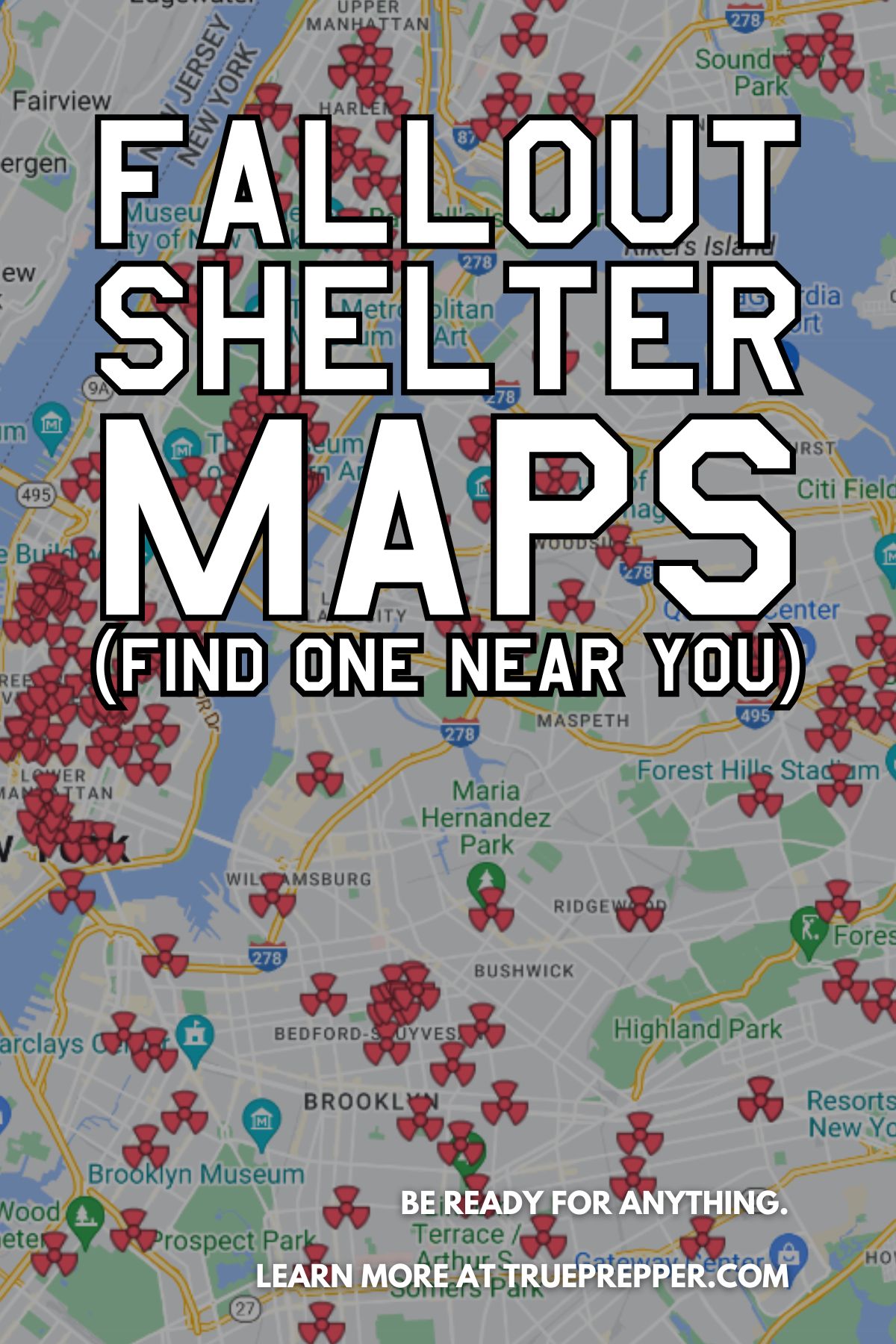
The post Fallout Shelters Near Me | Nuclear Bomb Bunker Locations appeared first on TruePrepper.
https://trueprepper.com/fallout-shelters/
 CampingSurvivalistHuntingFishingExploringHikingPrivacy PolicyTerms And Conditions
CampingSurvivalistHuntingFishingExploringHikingPrivacy PolicyTerms And Conditions
